NEWS from here and there
NEWS FROM HERE AND THERE
4 September 2014
An immense and rare find of gold coins in Devon, England, spotted by a metal detector and correctly declared to archeologists. Hope to hear more about this, I suspect a villa was near the hoard. Click here. Meanwhile in France amateur archeology is quite against the law! Click here to see the article about a man in France with his metal-detector who found and sold hundreds of Roman coins.
25th July 2014 Ordered to be destroyed.
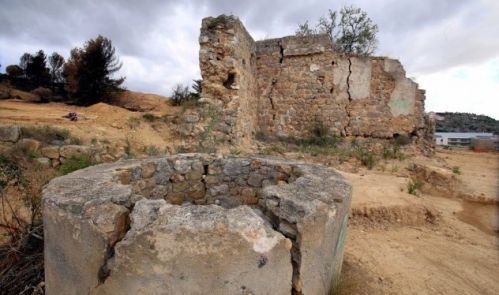
An article appeared in our local paper. It said;
In the area known as La Coupe, near the brook called St. Hyppolyte, many discoveries have been made of major scientific interest. (You can find this area south of Narbonne to the west of today's main road south. The site was beside the old Roman road, Via Domitia, a few metres more inland than today's main road, because the level of water in the étang was higher then.) The article announced that the site would close on 25th July, after two months of excavations, so that the bulldozers could clear the site for the building of a housing estate to continue.
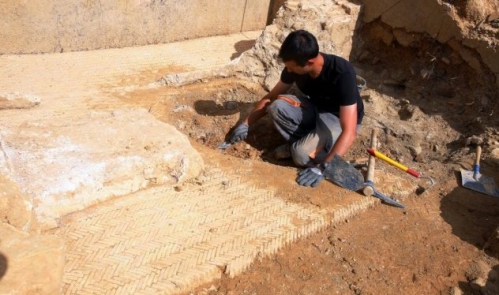
The site began life in Roman times, and then was abandoned, then revitalised in Carolingian times, (or late Visigothic) so two periods have been excavated by official archeologists from Montpellier. So much information about the ancestors of the Narbonne people! They found several wells, mosaics, a Roman villa, several floors of seven colours of spicus spicatum, thirty 8th century graves and a 12th century medieval tower overlooking the sea - possibly defensive. It's said there is a church to St. Hippolyte, and Roman workshops, still waiting to be discovered, plus a Gallo-Roman graveyard. "The eternal question raised in Narbonne," the paper added, "is - when will we cease to sacrifice our history on the altar of commercial building?"
I posted this article on Facebook and was moved by how much people cared about this - it was shared many times, in England, in Poland, in Jersey, in Sweden, in the USA.
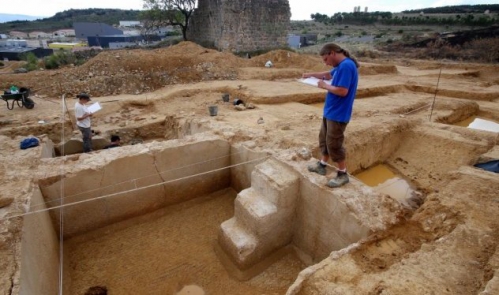
The story was repeated the next day by France Pittoresque, (here) who told us the name of the company that is going perpetrate this destruction - Hectare.
Notre Patrimoine
This translates as "Our Inheritance" and the French use the expression to cover those things of history etc that belong to the people. Hence, they are now trying to persuade people to limit their use of metal-detectors and to declare any any finds to the appropriate authority. They calculate that France is losing millions of euros worth of "antiquities" every year. This invisible trade has, of course, been going on since the 19th century, when many "gentlemen" started making collections of coins and finds, and then later selling them.
Click here for the French press-cutting.
The palace in Narbonne, opposite the palace
People driving through Narbonne are well used to seeing some Roman remains opposite the Palace of Justice, and are used to the idea that a block of flats would eventually be built there.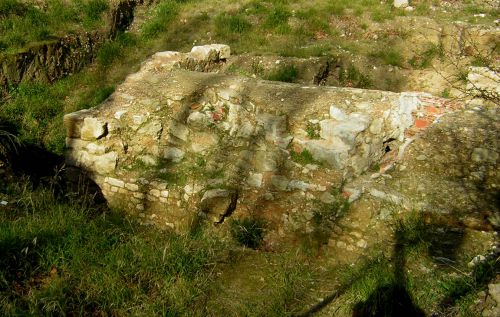
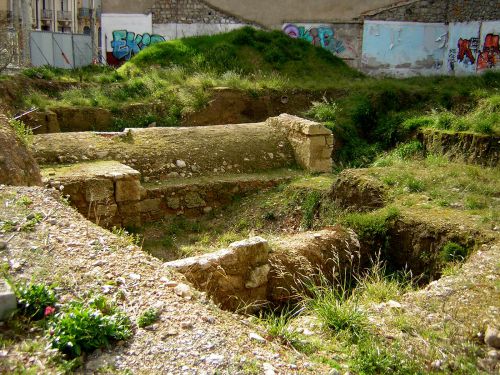
But on 5th September 2011 the local paper published an article (my translation):
A Roman palace buried by lack of decision
To the west of the Boulevard General de Gaulle, opposite the palace of Justice, the work of a block of flats "builds its full", cementing in a major archeological discovery.
"It's a scandal," said Madame Nicole Juan, the President of the Association Via Aquitana.
The text continues; Narbonne is like a new Pompei, with its baths, arenas and amphitheatres, said the writer Charles Nodier in 1835. Since the 19th century have patiently reconstituted the Roman town sleeping beneath our feet. Building work is dreaded by the entrepreneurs, in case riches are reveled several metres down. One knows that, opposite the palace of Justice, will surge soon a block of flats. Behind the palisade, workers are making up for delays in recent years. For the company SM, the crisis has slowed down progress in the building trade. But there's not only that.
Outside the ramparts that circled the town, archeological excavations of found remains of incredible richness. So beautiful, it made testimony of an important past for this luxury dwelling. It was built in the first century BC. A sounding was done, 5 metres down, in 2006. It was limited, 3 metres by 1.5 metres, but it revealed frescos of high quality, ceramics, pipework (for central heating) and terra cotta. A red theatrical mask was found, the pigment used, rouge cinabre, was one of the most costly, imported from Italy, reserved for decorating the homes belonging to the richest of the Empire. One finds the equivalent paint only in Rome and Pompey.
Two Corinthian decorated chapiters which crowned the pillars have been recovered, one decorated with acacia flowers.
Who was this owner, rich enough to live there and import from Italy a team of painters in the middle of the first century BC? (Note - Narbonne was founded in 118BC.)
In the game of cards that is our economy today, this villa has the worth of five apartment blocks; on regrets today's crowd that scorns this town, the first daughter of Rome.
If you can read French, you can read the full story by clicking here.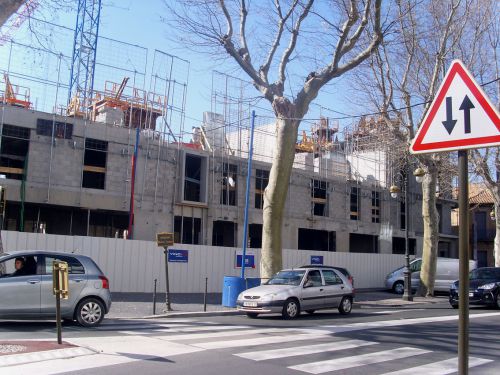
In March 2012 I passed the site in Narbonne. The block of flats is on its way up.
the Sword and the Stone
A sword has recently been discovered in Jerusalem, thought to be that of a Roman soldier serving under Titus during the destruction of the Temple of Jerusalem in 70AD, plus a scratching on a stone of the Menorah. Click here to read more.
More news about the gladiators of York
What sort of lifestyle did these men have, and what sort of death? Another film (see last entry below) interviewing the museum curator of York with his dead-pan interpretation of dramatic events in the arena. Click here
Moving pictures from Vesuvius
It's moving because it is a film, but also because we can see how people died in this volcanic catastrophe of 79AD. Incredible - and heart-breaking.
news.discovery.com/videos/history-pompeii-body-casts-invade-new-york.html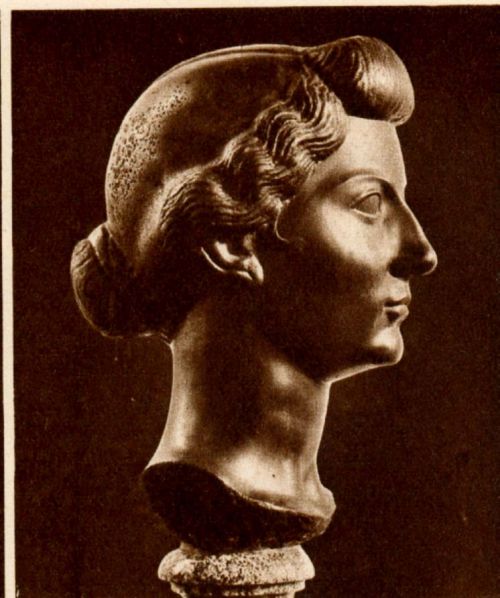
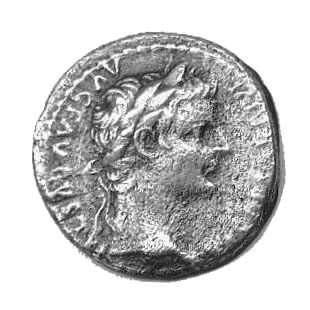
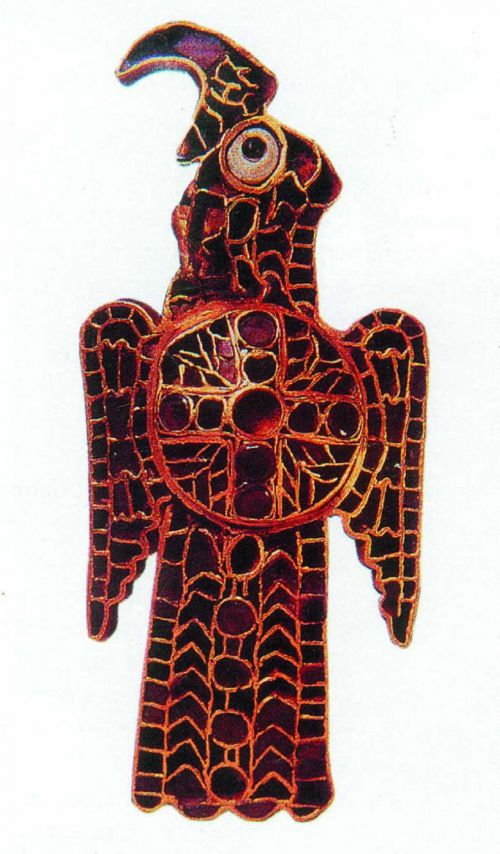
Trésor . . . tête d'Antonia . . . . . . . . pièce d'argent de Tibère . . . . . . . . . fibule Visigothique
Treasure-hunters beware!
If you find treasure, who does it belong to? Article 716 of the French Code Civil says, ownership of a treasure belongs to he who found it at his own expense. Found at the expense of another, it belongs half to him and half to whoever paid the expenses.
Objects found in river beds or étangs or lakes, even on private land, belong to the State. (Law made in August 1669)
When excavations are done by the State, any treasure is shared between the State and the owner of the land. (Law of 27th Sept 1941.) Nothing can be done without authorisation either on your own land, or on somebody else's. Responsibility for an excavation can only be given to a person proved to be competent in the field of archeology.
Let's hope the odds and ends we pick up on sites are not regarded as treasure!
DISCOVERY OF HEADLESS GLADIATORS IN ENGLAND GB
A fascinating news item found that excavations in Yorkshire revealed a Roman amphitheatre with several headless human remains.
Go to;
www.news.discovery.com/archaeology/roman-gladiator-graveyard-found-in-york.html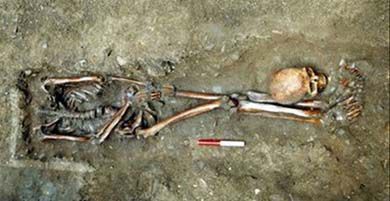
and if you want to watch a video, click here
To read further detailed analysis of the lives of the gladiators click here
And if you would like to train to be a gladiator, click here for a video translated into English from the Italian.
Inscrivez-vous au blog
Soyez prévenu par email des prochaines mises à jour
Rejoignez les 16 autres membres
